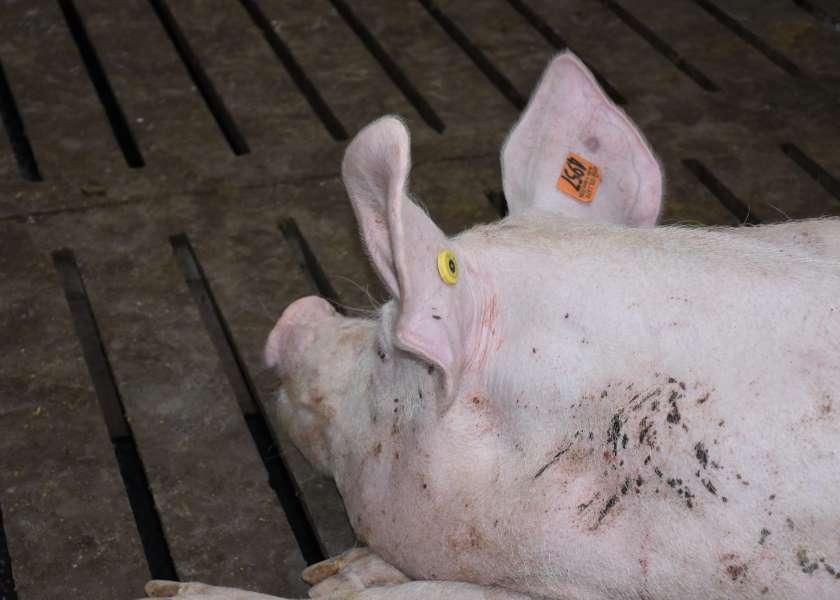Is the Spike in PCV2 Cases in Sows a Concern?

The latest Swine Disease Reporting System report has some people scratching their heads. For the first time in recent memory, porcine circovirus type 2 (PCV2) jumped into the top 10 most-diagnosed diseases list at the Iowa State University Veterinary Diagnostic Lab. At No. 9, it surpassed porcine epidemic diarrhea virus and came in just behind Mycoplasma hyopneumoniae.
Porcine circovirus associated disease (PCVAD) can be caused by any PCV2 strain. When PCVAD first showed up in the U.S. in 2006-2007, it was devastating, says Greg Cline, DVM, senior key account veterinarian with Boehringer Ingelheim.
“The most striking clinical sign you would see was just pigs’ failure to thrive. They become very poor pigs very quickly, and very resistant, as you would expect with any virus, to any treatment,” Cline says.
When it was first introduced, Paul Sundberg, executive director of the Swine Health Information Center (SHIC), notes it had the promise of being a very impactful disease.
“To their credit, the animal health companies quickly recognized that and developed safe and effective vaccines. In general, PCV2 has been and can be effectively managed by good vaccination practices,” Sundberg says.
After commercial PCV2a vaccines hit the market, the industry discovered they were incredibly effective against all strains of PCV2 – including PCV2a, PCV2b and PCV2d.
“If your herd was vaccinated, and it started showing signs of PCVAD, we immediately went to vaccine compliance because something had to be wrong with how they were administered because the vaccines have been so effective,” Cline says.
A few years ago, Cline says the industry began to see emergence of a new type of PCV2, the d genotype.
“This is problematic because we expect lifelong immunity. Generally, we give a dose to pigs at weaning, and then we may or may not revaccinate sows in the farrowing house. That has served us well, and then that seemed to change,” Cline says.
Why the Spike in Cases?
From February to March 2023, there was an increase in the detection of porcine circovirus by PCR. The increase was mainly being driven by positive cases in the adult/sow category, where positive test results spiked from 38.53% in February to 50.52% in March.
“What's concerning about the change in PCV2 is that everything was so good for so long. The vaccines were very effective,” Cline says. “This change in sows is concerning because this is a virus that can be transferred in utero. As a production veterinarian, that's problematic. If the virus is transmitted in utero, I now have pigs that are infected before I can ever get vaccines into them. And that, of course, is never a good situation.”
Giovani Trevisan, principal investigator for the SDRS report and research assistant professor at Iowa State University, points out that while they did see an increase in detection from the adult/sow group, they still working with the advisory group for gather insight from the field on what is happening to cause the increased detection.
“The data is pointing to the direction that some producers/production systems may have changed their monitoring and surveillance approach,” Trevisan says. “It looks like a more intensive testing frequency, probably associated with monitoring is contributing to this increased positivity. We are still gathering the advisory group comments to sort this out.”
Use a Full Dose
Trevisan says the comments about vaccine compliance and the importance of using a full dose were made because producers sometimes forget to check how a vaccine bottle has been conditioned and handled.
“For example, a vaccine that should be kept cold but went through a freeze-thaw process may lose its ability to develop protective immunity. Another example are events where the dose administered to the pigs is not the one recommended by the vaccine company. The vaccine developer may recommends 1 cc but only half or a quarter of a CC is injected in the pig. This type of procedure creates a direct opportunity for failure in the immunization process and open opportunity for occurrence of the disease in the field,” Trevisan says.
If you start to see PCVAD issues in your herd, Cline recommends first examining if vaccine compliance protocols are being followed.
“As a veterinarian, I can't tease out a problem if we're doing something that's different than what’s on a vaccine’s label. If we're not meeting the minimum immunizing dose of the vaccine, even though a partial dose of the vaccine may have served that system or that producer very well for multiple years, moving to full dose is probably the very first step in making sure the vaccine protocol has been complied to fully,” Cline explains.
Pay Attention to Virus Evolution
Up to this point, research studies have indicated the ability of PCV2a- and PCV2b-based vaccines to provide cross protection against PCV2 genotype d. The SDRS advisory group noted its concerns of PCV2 genotype d circulating in the field. Most of the commercially available vaccines in the U.S. do not include PCV2 genotype d, the report notes, so it’s important to monitor PCV2 evolution and the cross protection offered by available vaccines.
“If your protocol is working, don't change. Focus on other things like biosecurity. But when you start having a problem with PCVAD, examine vaccine protocol compliance. If that doesn’t resolve the issue, find out the predominant genotype circulating within the lesions and consider if you might benefit from a change to a PCV2d vaccine,” Cline says.
Of course, he quickly points out that biosecurity should always be emphasized on the farm.
“Know what your animals are bringing onto your farm in comparison to what is in residence on your farm. The good old-fashioned blocking and tackling principles associated with biosecurity still play very well here,” Cline says.
More from Farm Journal's PORK:
Livestock and mRNA Vaccines: What You Need To Know
When Disease-Associated Streptococcus Suis Strikes Your Herd







